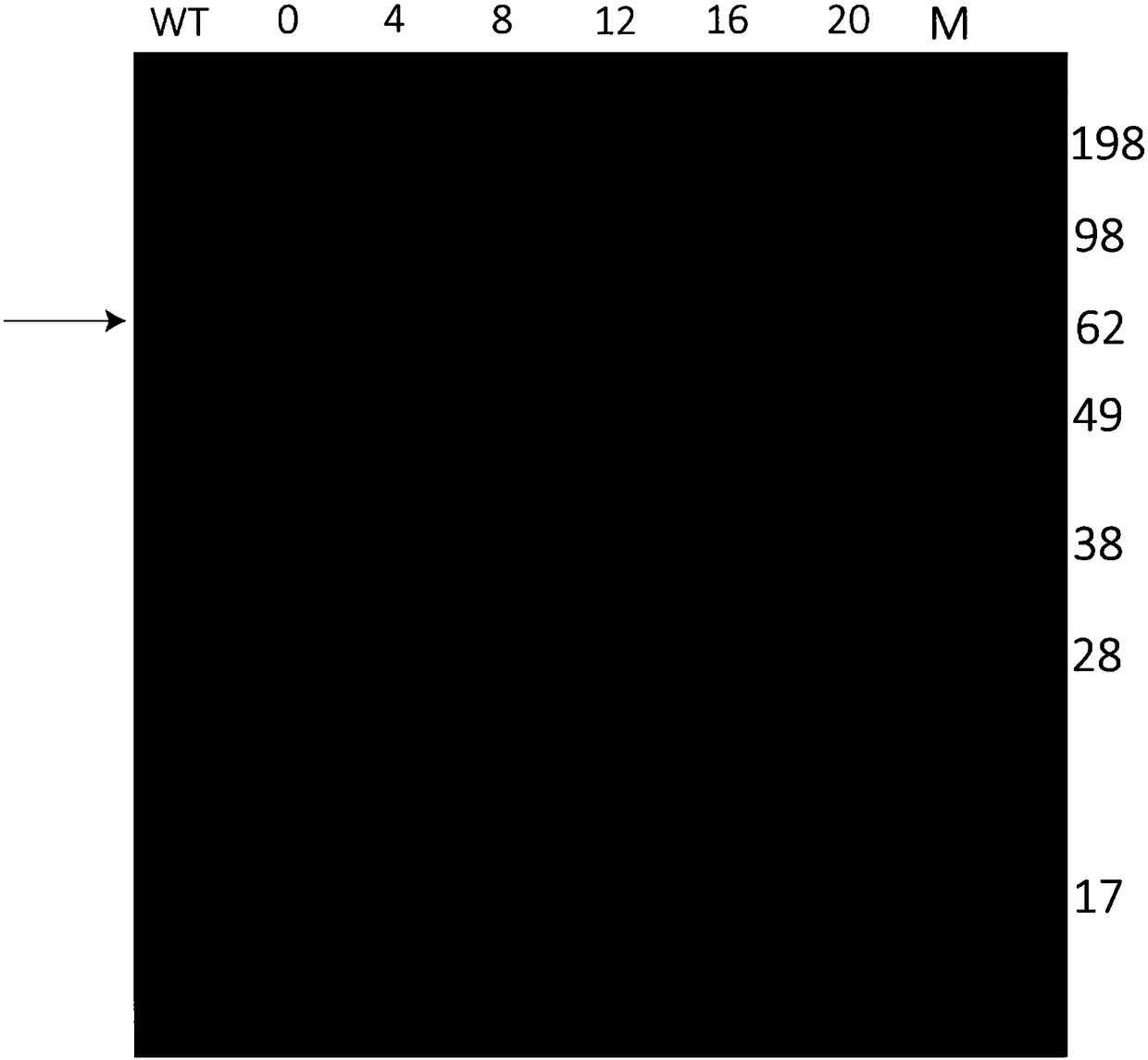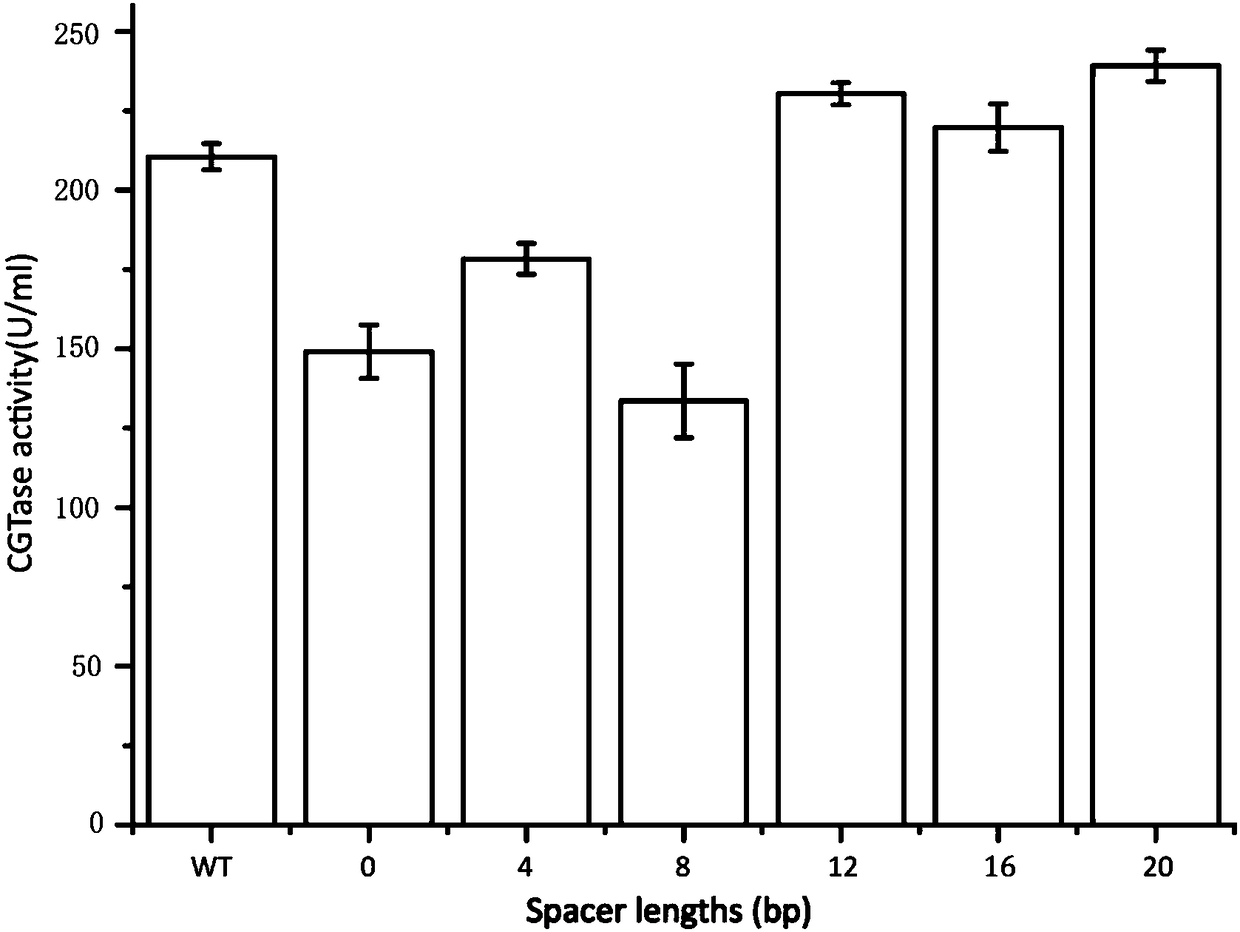Repetitive extragenic palindromic sequence for improving exogenous gene mRNA and application thereof
A technology of genetically engineered bacteria and nucleotide sequences, applied in the field of repetitive palindromic sequences, can solve the problem of limited production of cyclodextrin glucosyltransferase and achieve the effect of increasing expression
- Summary
- Abstract
- Description
- Claims
- Application Information
AI Technical Summary
Problems solved by technology
Method used
Image
Examples
Embodiment 1
[0025] Example 1 Preparation of expression vectors containing different repetitive palindromic sequences
[0026] Using the recombinant plasmid CGT-P1-1-DB3 constructed in our laboratory containing the gene sequence of cyclodextrin glucosyltransferase shown in SEQ ID NO.4 as a template, using phosphorylated PDRep1F / PDRep1R as primers, using PCR amplification of a series of recombinant plasmids containing repetitive palindromic sequences. The obtained series of recombinant plasmids were transformed into Escherichia coli host bacteria, and a series of recombinant engineered bacteria CGTaseBL21(DE3) secreting and expressing cyclodextrin glucosyltransferase were obtained. The recombinant engineering bacteria were inoculated into 96 deep-well plates, and the CGT enzyme activity was measured after 90 hours of fermentation, and 4 groups with the highest enzyme activity were screened out, and the recombinant plasmids were named CGT-REP1 / CGT-REP2 / CGT-REP3 / CGT-REP4, the repetitive pal...
Embodiment 2
[0030] Example 2 The preparation of the expression vector containing the spacer between the repetitive palindromic sequence of different lengths and the stop codon
[0031]Using the plasmid CGT-REP1 template, using spacer4F to spacer20R as primers, use PCR to amplify recombinant plasmids containing different lengths of the spacer between the repetitive palindromic sequence and the stop codon, which are named CGT-REP1-S4 / CGT -REP1-S8 / CGT-REP1-S12 / CGT-REP1-S16 / CGT-REP1-S20, the spacer sequences contained therein are respectively as SEQ ID NO.7 / SEQ ID NO.8 / SEQ ID NO.9 / SEQ Shown in ID NO.10 / SEQ ID NO.11. The above-mentioned recombinant plasmid was transformed into E. coli host bacteria, and the CGT enzyme activity was measured after 90 hours of fermentation, and the strain with the highest enzyme activity was screened out, so as to obtain the optimal spacer length between the repetitive palindromic sequence and the stop codon.
[0032] The primer sequences used in this embodiment...
Embodiment 3
[0044] Induced expression of embodiment 3 recombinant escherichia coli
[0045] Seed cultivation: transfer the preserved strains into a 250mL Erlenmeyer flask filled with 50mL of LB medium, and cultivate for 8 hours at a rotary shaker with a rotational speed of 200r / min and a cultivation temperature of 37°C. Fermentation culture: Inoculate the cultivated seed culture solution into a 500mL Erlenmeyer flask containing 100mL fermentation medium at an inoculum size of 4% (v / v) for cultivation. The initial cultivation temperature is 30°C, and the shaker speed is 200r / min , when the cells were cultured to OD 600 When it is 0.6, after adding IPTG, quickly transfer to a shaker at different temperatures, and continue to induce for 90h. Add 100 μg / mL ampicillin to each medium before use.
[0046] After fermentation, the fermentation supernatant was taken for SDS-PAGE electrophoresis ( figure 2 ), and measure the enzyme activity of the fermentation supernatant. The activity of cyclo...
PUM
 Login to View More
Login to View More Abstract
Description
Claims
Application Information
 Login to View More
Login to View More - R&D
- Intellectual Property
- Life Sciences
- Materials
- Tech Scout
- Unparalleled Data Quality
- Higher Quality Content
- 60% Fewer Hallucinations
Browse by: Latest US Patents, China's latest patents, Technical Efficacy Thesaurus, Application Domain, Technology Topic, Popular Technical Reports.
© 2025 PatSnap. All rights reserved.Legal|Privacy policy|Modern Slavery Act Transparency Statement|Sitemap|About US| Contact US: help@patsnap.com



